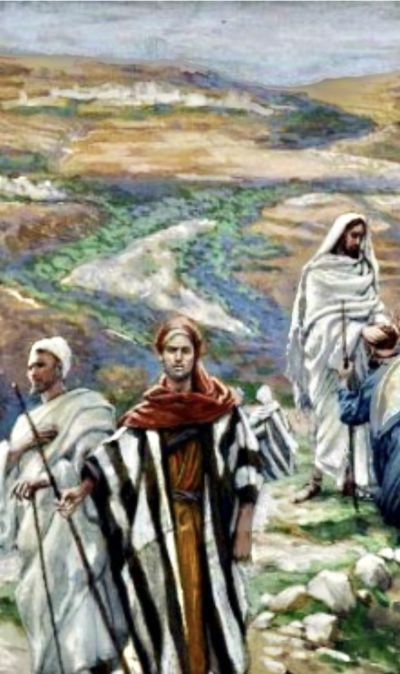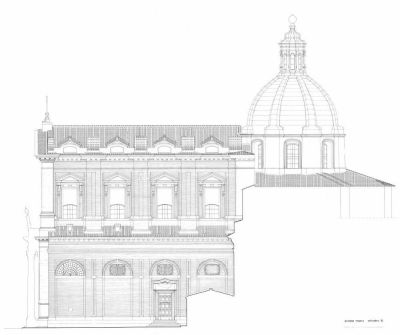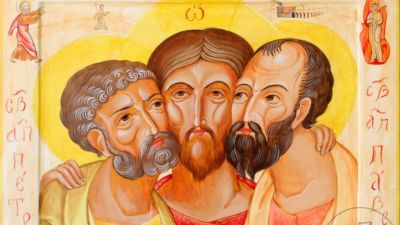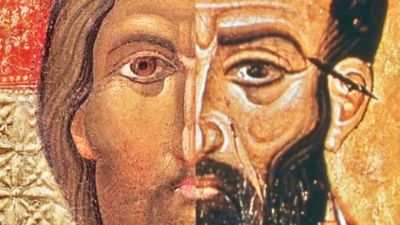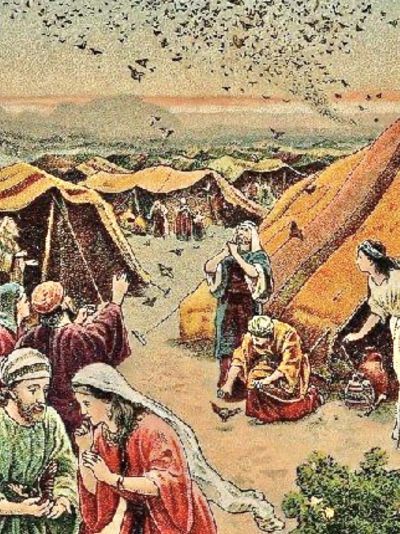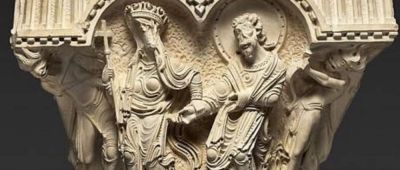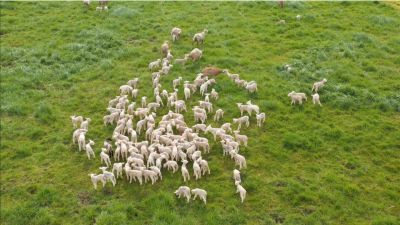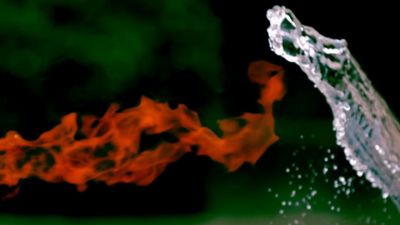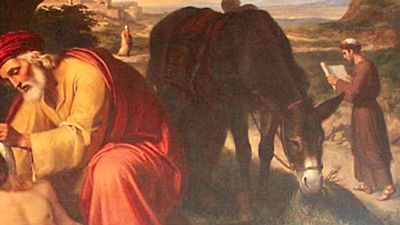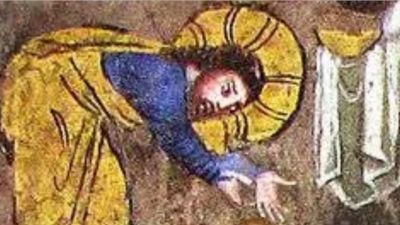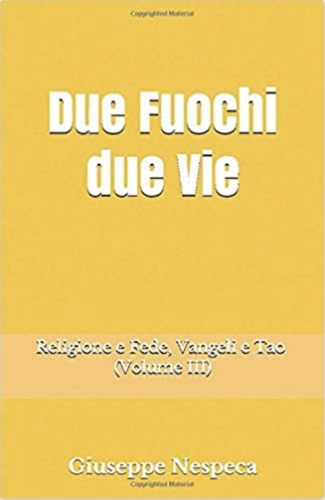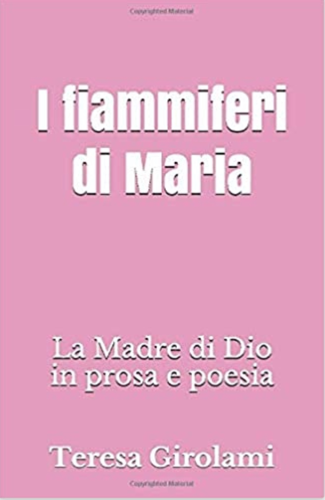Dialogo e Solstizio
And move the neighbors (Lk 10:1-12.17-20) Jesus notes that the Apostles are not free people (cf. Lk 9). Their way of being is so grounded on standard attitudes and obligatory…
Published in
Commento breve
New Wineskins and vocational Freedom (Mt 9:14-17) Fasting is a regenerative principle that has a unique healing power, both detoxifying and essential. It activates the energies of humanity and at…
Published in
Commento precedente
Jesus answers John's disciples about fasting. Now the Bridegroom is with them and they will not fast; when he is taken from them they will fast. Logic that breaks down…
Published in
Aforisma
The passage proposed for this Sunday is taken from the Gospel of Luke and emphasises Jesus' mandate to his disciples, highlighting how they were to be itinerant preachers of the…
Published in
Angolo dell'avanguardista
1. The mission of Christ the Redeemer, which is entrusted to the Church, is still very far from completion. As the second millennium after Christ's coming draws to an end,…
Published in
Angolo dell'ottimista
Dear Brothers and Sisters, The Gospel today (cf. Lk 10: 1-12, 17-20) presents Jesus sending out 72 disciples to the villages he is about to visit in order to prepare…
Published in
Angolo del tradizionalista
The Gospel this Sunday (Lk 10:1-12, 17-20) speaks to us about this: the fact that Jesus is not a lone missionary, he does not want to fulfil his mission alone,…
Published in
Angolo dell'apripista
In today's society, there are many factors that cause anxiety and restlessness, and strategies to combat them are often difficult to find. This period is characterised by the 'shaking' of…
Published in
Angolo dell'artista
14th Sunday in Ordinary Time (year C) [6 July 2025] May God bless us and the Virgin Mary protect us! Even though we are entering the holiday season, I will…
Published in
Angolo della Pia donna
(Gal 6:14-18) Galatians 6:14 As for me, may I never boast of anything except the cross of our Lord Jesus Christ, through which the world has been crucified to me,…
Published in
Art'working
Thomas: without hysteria (Jn 20:19-31) The Manifestation, the Spirit, the remission (Jn 20:19-23) The Johannine Pentecost does not suffer any temporal delay (v.22), yet the Lucan account also emphasises the…
Published in
Preghiera critica
Fasting: Opening (Mt 9:14-17) Fasting has travelled through all religious and mystical traditions, because it is intended to bring women and men closer to their own profound essence - to…
Published in
Rivoluzione della Tenerezza
But can he participate in the ritual? Sitting and with his eye on the ledgers, only then rich - indeed, 'lord' (Mt 9:9-13) "Jesus does not exclude anyone from his…
Published in
Croce e Vuoto
Beyond the Twelve: 72 others unsure (but transparent) in the uncertainty of wolves (Lk 10:1-20) And I and You "Truth is not at all what I have. It is not…
Published in
il Mistero
Today’s Gospel passage (cf. Lk 10:1-12, 17-20) presents Jesus who sends 72 disciples on mission, in addition to the 12 Apostles. The number 72 likely refers to all the nations. Indeed, in the Book of Genesis 72 different nations are mentioned (cf. 10:1-32) [Pope Francis]
L’odierna pagina evangelica (cfr Lc 10,1-12.17-20) presenta Gesù che invia in missione settantadue discepoli, in aggiunta ai dodici apostoli. Il numero settantadue indica probabilmente tutte le nazioni. Infatti nel libro della Genesi si menzionano settantadue nazioni diverse (cfr 10,1-32) [Papa Francesco]
Christ reveals his identity of Messiah, Israel's bridegroom, who came for the betrothal with his people. Those who recognize and welcome him are celebrating. However, he will have to be rejected and killed precisely by his own; at that moment, during his Passion and death, the hour of mourning and fasting will come (Pope Benedict)
Cristo rivela la sua identità di Messia, Sposo d'Israele, venuto per le nozze con il suo popolo. Quelli che lo riconoscono e lo accolgono con fede sono in festa. Egli però dovrà essere rifiutato e ucciso proprio dai suoi: in quel momento, durante la sua passione e la sua morte, verrà l'ora del lutto e del digiuno (Papa Benedetto)
Peter, Andrew, James and John are called while they are fishing, while Matthew, while he is collecting tithes. These are unimportant jobs, Chrysostom comments, "because there is nothing more despicable than the tax collector, and nothing more common than fishing" (In Matth. Hom.: PL 57, 363). Jesus' call, therefore, also reaches people of a low social class while they go about their ordinary work [Pope Benedict]
Pietro, Andrea, Giacomo e Giovanni sono chiamati mentre stanno pescando, Matteo appunto mentre riscuote il tributo. Si tratta di lavori di poco conto – commenta il Crisostomo - “poiché non c'è nulla di più detestabile del gabelliere e nulla di più comune della pesca” (In Matth. Hom.: PL 57, 363). La chiamata di Gesù giunge dunque anche a persone di basso rango sociale, mentre attendono al loro lavoro ordinario [Papa Benedetto]
The invitation given to Thomas is valid for us as well. We, where do we seek the Risen One? In some special event, in some spectacular or amazing religious manifestation, only in our emotions and feelings? [Pope Francis]
L’invito fatto a Tommaso è valido anche per noi. Noi, dove cerchiamo il Risorto? In qualche evento speciale, in qualche manifestazione religiosa spettacolare o eclatante, unicamente nelle nostre emozioni e sensazioni? [Papa Francesco]
A life without love and without truth would not be life. The Kingdom of God is precisely the presence of truth and love and thus is healing in the depths of our being. One therefore understands why his preaching and the cures he works always go together: in fact, they form one message of hope and salvation (Pope Benedict)
Una vita senza amore e senza verità non sarebbe vita. Il Regno di Dio è proprio la presenza della verità e dell’amore e così è guarigione nella profondità del nostro essere. Si comprende, pertanto, perché la sua predicazione e le guarigioni che opera siano sempre unite: formano infatti un unico messaggio di speranza e di salvezza (Papa Benedetto)
His slumber causes us to wake up. Because to be disciples of Jesus, it is not enough to believe God is there, that he exists, but we must put ourselves out there with him; we must also raise our voice with him. Hear this: we must cry out to him. Prayer is often a cry: “Lord, save me!” (Pope Francis)
Il suo sonno provoca noi a svegliarci (Papa Francesco)
duevie.art
don Giuseppe Nespeca
Tel. 333-1329741
Disclaimer
Questo blog non rappresenta una testata giornalistica in quanto viene aggiornato senza alcuna periodicità. Non può pertanto considerarsi un prodotto editoriale ai sensi della legge N°62 del 07/03/2001.
Le immagini sono tratte da internet, ma se il loro uso violasse diritti d'autore, lo si comunichi all'autore del blog che provvederà alla loro pronta rimozione.
L'autore dichiara di non essere responsabile dei commenti lasciati nei post. Eventuali commenti dei lettori, lesivi dell'immagine o dell'onorabilità di persone terze, il cui contenuto fosse ritenuto non idoneo alla pubblicazione verranno insindacabilmente rimossi.


